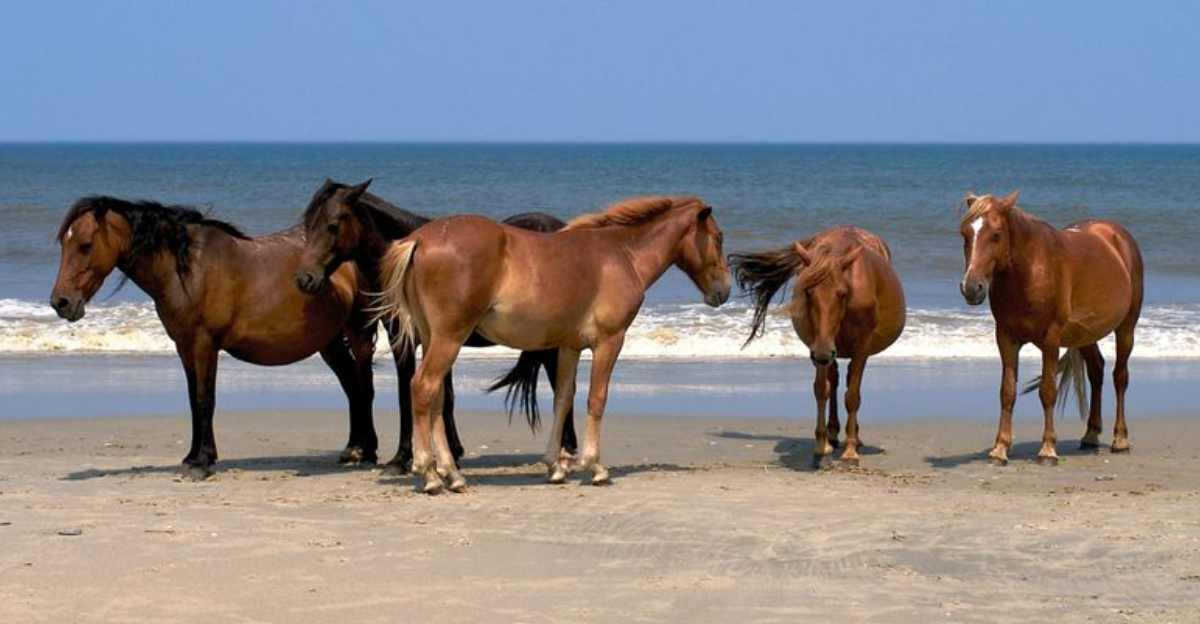I’ll never forget the first time I spotted them – majestic figures galloping along the shoreline of North Carolina’s Outer Banks.
The Corolla wild horses are living legends. They’re descendants of Spanish mustangs that swam ashore from shipwrecks over 500 years ago.
These remarkable creatures have survived against incredible odds, adapting to a harsh barrier island environment while maintaining their ancient bloodlines. Their story is a historical treasure. Ready to read why?
Remarkable Island Survival Skills
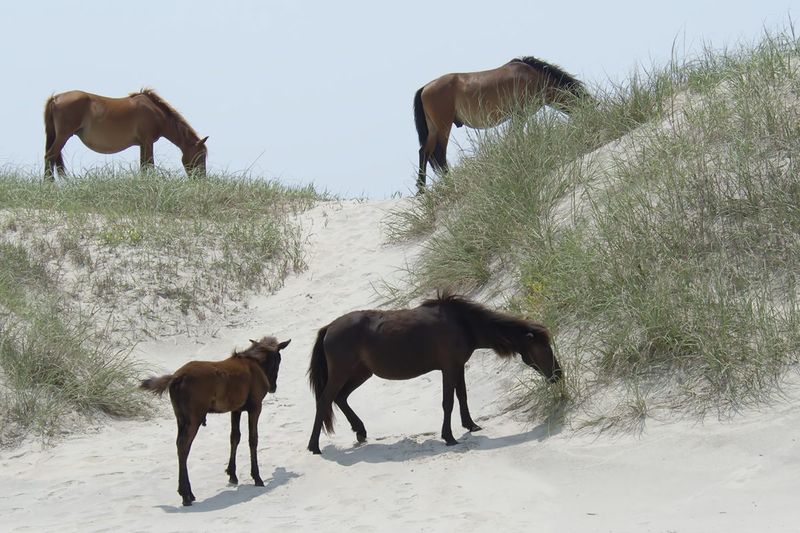
Watching these horses dig holes in the sand with their hooves blew my mind! They’re actually creating freshwater wells, a survival technique passed down through generations.
While mainland horses would perish drinking saltwater, these clever equines know exactly where to find fresh water just below the surface.
Their digestive systems have adapted to process salt-tolerant vegetation that would make other horses sick. Sea oats, spartina grass, and even prickly pear cactus make up their unique barrier-island diet.
North Carolina’s Living Treasures
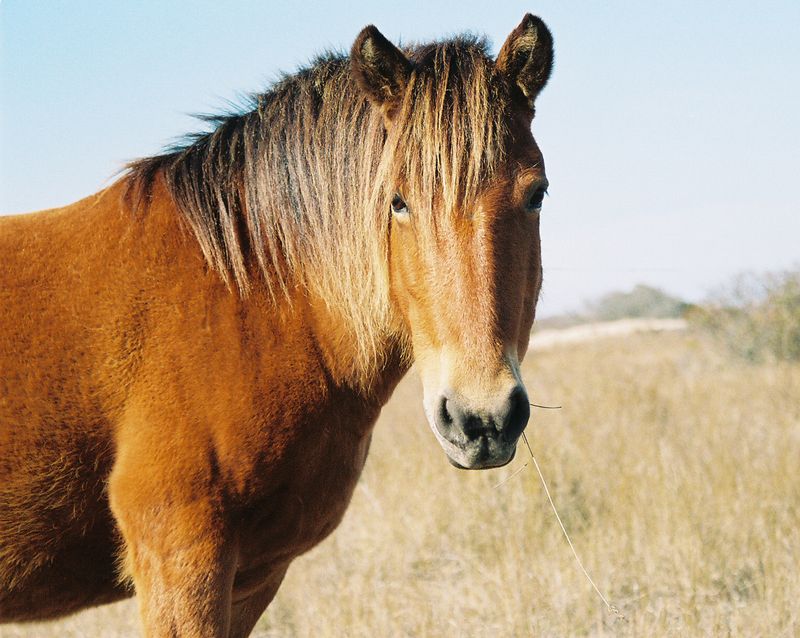
In 2010, I cheered along with conservation groups when these magnificent creatures were officially designated the State Horse of North Carolina!
This recognition wasn’t just symbolic – it highlighted their cultural significance and helped strengthen protection efforts.
The horses possess fascinating anatomical differences from domestic breeds. They typically stand just 13-14 hands tall (that’s small for horses!) and have only five lumbar vertebrae instead of the usual six found in most modern horses.
Ancient Spanish Bloodlines In American Waters

The Corolla horses aren’t just any wild horses – they’re living time capsules carrying rare Spanish Colonial bloodlines that have nearly vanished elsewhere.
DNA testing confirms these horses are direct descendants of the steeds brought by Spanish explorers in the 1500s.
Their genetic makeup is so precious that each horse represents an irreplaceable piece of living history.
Colonial Spanish Mustangs once numbered in the millions across America, but today fewer than 3,000 remain, making the Corolla herd a crucial genetic reservoir of this historic breed.
Fighting Extinction With Science
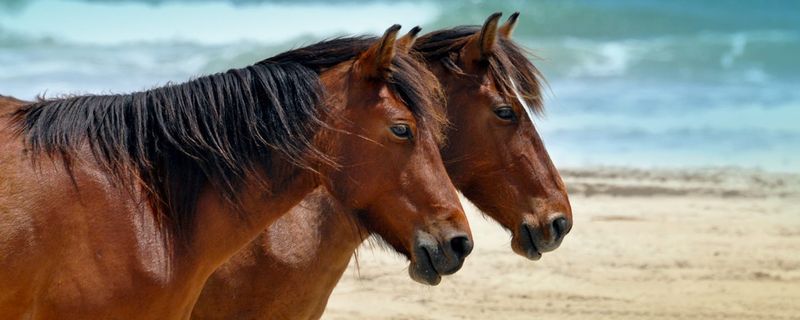
Their population is carefully managed through a contraceptive vaccine called PZP, which prevents pregnancy without disrupting natural behaviors.
Genetic rescue efforts include the introduction of stallions from the related Shackleford Banks herd to combat inbreeding. Scientists are mapping their DNA to track genetic diversity and guide breeding decisions.
The Corolla Wild Horses Protection Act, introduced repeatedly in Congress, aims to maintain a genetically viable herd of 120-130 horses.
Local ordinances require staying at least 50 feet away – though I witnessed tourists repeatedly ignoring this rule.
Cultural Icons Facing Modern Threats
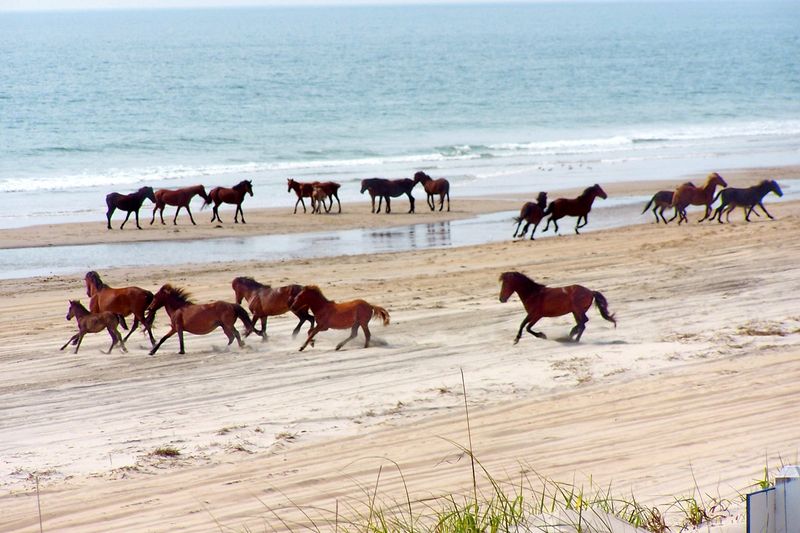
Tourists like me flock to the Outer Banks specifically to glimpse these living legends, generating millions in tourism revenue annually.
Sadly, I learned these magnificent creatures face constant danger. Vehicle collisions have claimed several horses in recent years as tourism increases. Rising sea levels threaten their habitat, while development continues to shrink their territory.
As one of the last free-roaming Colonial Spanish Mustang herds in the Americas, their cultural significance extends beyond North Carolina.
